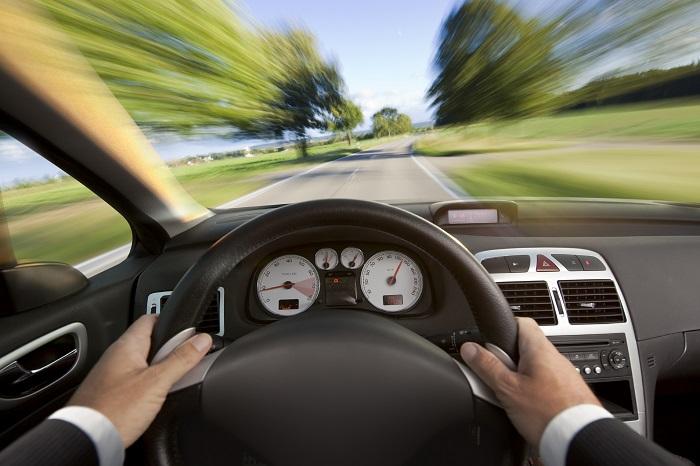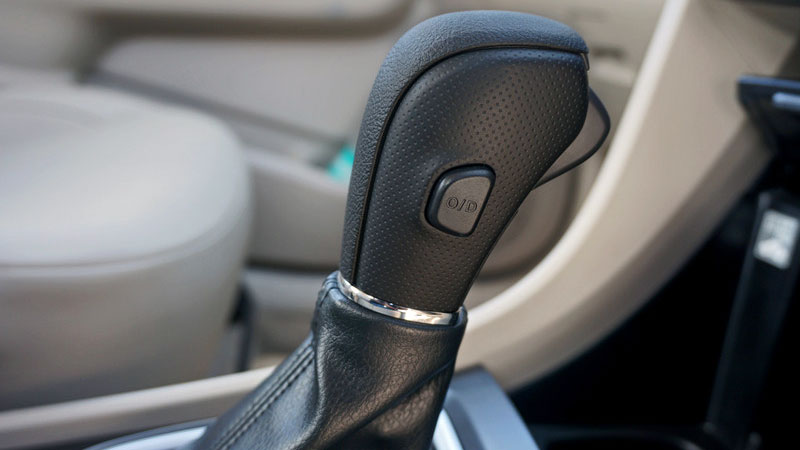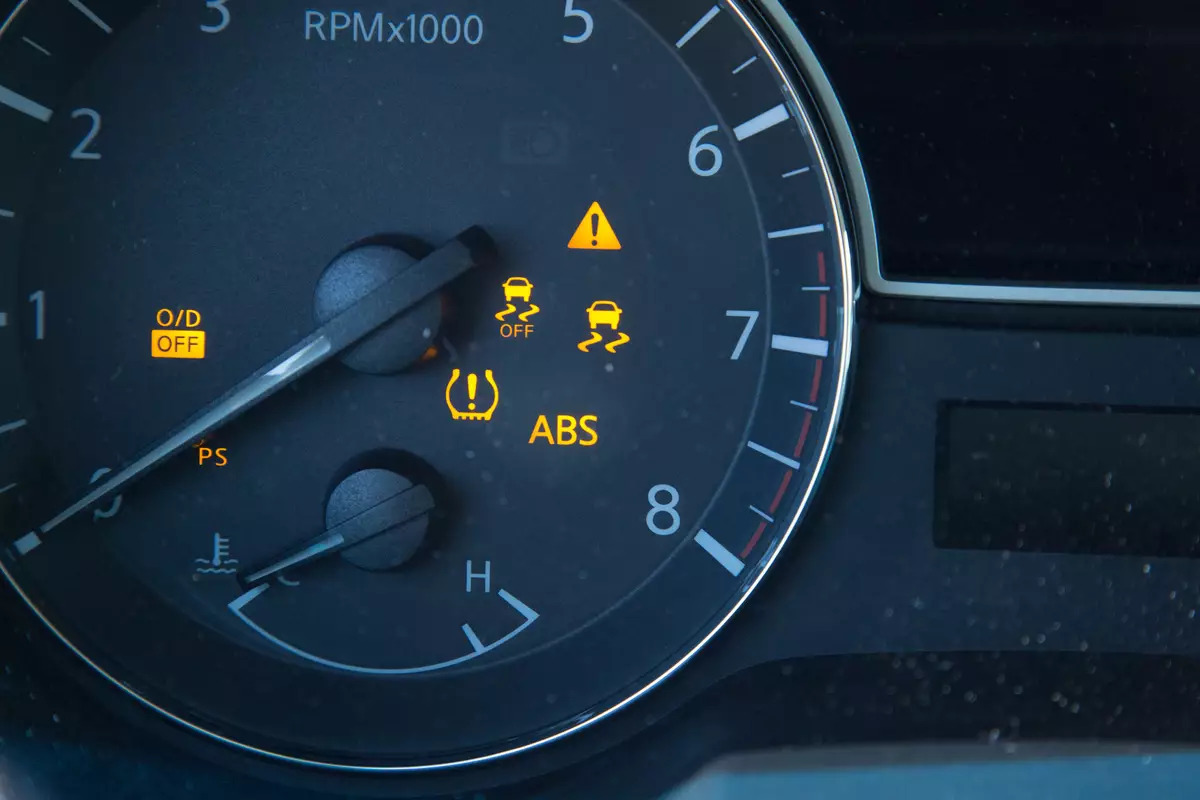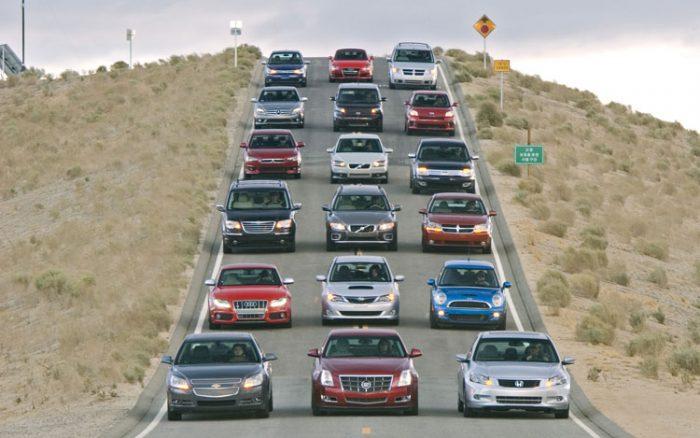Overdrive in automatic car has come a long way since the improvement of the engine mechanism and highway transportation. The smooth roads and powerful cars encourage modern people to speed up on the road.
But, auto manufacturers had to solve the challenge of creating gearing that can adapt to higher speeds without frictional loss to the rear. The gearing also has to maintain a lower RPM and put less strain on the engine. It’s when the overdrive gear came into the equation.
Contents
What Is Overdrive In Automatic Car?
Today’s automatic transmission cars with advanced transmissions, and electronic control often come with a semi-automatic mode, allowing the car to choose the most suitable gearbox in each type of terrain, even according to the habit of pressing the gas pedal.
But in the past, the technology was not as optimal as it is today, so on automatic gearshift levers, an O/D function may appear to assist. Currently, there are also some cars still equipped with this function, for those who love driving inspiration.
Overdrive or O/D, usually turned on and off at the touch of a button, offers the highest gear in the transmission in an automatic car.

It brings the RPM (Round Per Minute) of the engine down at a given road speed to facilitate better speed and fuel efficiency. It also helps your car to provide the best performance in higher-speed cruising.
In detail, overdrive is typically across-limit driving. The limit here is the gear ratio, at 1.00:1. O/D On means that the vehicle is allowed to run in gearbox mode with a gear ratio exceeding the limit of 1.00:1, O/D Off is limited to 1.00:1.
How to Use Overdrive in Automatic Car More Effectively?
Usually, cars having this gear have a dedicated overdrive button. Using it means locking it out and not engaging it. With the overdrive gear, the transmission goes through all the gears and then limits the functioning of the rest of the gears.
Below will be some notices on how overdrive in cars works at its best, both when ON and OFF. Let’s follow along!
SEE MORE:
- Learn the Names of 5 Cars that Should not be Automatic!
- The Functions of Low Gear in Automatic Transmission
When Will The O/D Be On
Since this feature is quite uncommon on super modern automatic cars nowadays, they are still available on several lines.

When the O/D is on (the O/D OFF light is not on on the dashboard), usually by default in automatic cars, it allows the gearbox to switch to the highest gear. This is when the vehicle is using the normal automatic gearshift function, and the engine RPM will decrease.
Overdrive in this case will result in quieter and smoother running with less overall engine wear by decreasing the amount of load on the engine. Moreover, this feature reduces engine wear and saves fuel.
Therefore, if moving normally on the smooth city road without obstacles on an auto transmission car, the O/D is always on, basically, whether you are noticing or not.
When To Deactivate O/D Gear (O/D OFF light shown-up)
Drivers should only actively deactivate O/D (O/D off light up on dashboard) often in situations such as slow traffic jams, accelerating quickly to pass, climbing high, going downhill… to take advantage of traction.
For the O/D off meaning, when the O/D function is deactivated, the vehicle will not let the transmission operate in the highest gear, but limit it to a lower gear to increase traction.

Here are the 2 situations you should take advantage of the O/D OFF in cars.
When you’re speeding up
It’s the textbook condition for using the overdrive in automatic car. When you drive at more than 60mph (50mph in the case of older vehicles), the RPM increases and the engine starts taking more strain.
The OD OFF light will work like magic to take the pressure away from the engine and bring down the RPM.
However, don’t use it when you are speeding at less than 50mph or during city driving because the speed tends to be inconsistent there. The OD prolongs the life of your car’s engine and drivetrain only if you apply it wisely.
When you need to go downshift
The braking system has to take a lot when you drive downhill or get stuck in an extended traffic jam.
Driving down a steep road requires you to put continuous pressure on the brake pedal while extended traffic requires sudden pushing of the pedal and speeding the car.
If the O/D is deactivated in those situations, it will keep the RPM above idle without straining the brake and the engine.

Overdrive In Automatic Car Vs. Manual Car
Both automatic and manual transmission cars can provide acceleration. And in both, overdrive serves as the top gear (with the lowest gear ratio). With automatic transmissions, O/D is usually an intuitive function initiated by the ECU when the vehicle reaches the appropriate speed.
In a manual gearbox, overdrive is the highest gear, but it must be done by the driver. At highway speeds, the higher the gear, the more efficient the operation.
Naturally, with a manual transmission, the driver plays an active role in acceleration by automatically shifting to the highest gear. But with automatic transmissions, the role will be opposite.
What Damages Can Be Caused by Incorrect Use Overdrive In Cars?
Overdrive in automatic car will both allow and limit your car to utilize the full range of the transmission to assist in every needed situation. It also helps with transmission life optimization and increasing fuel efficiency.
However, if you use it incorrectly such as while towing a trailer, driving uphill, or speeding at less than 50mph, it will cause irreparable damage for your automatic vehicle.
So if you know how to use it proficiently, go for it. Otherwise, only use it when going downhill for safety. If you forget to turn it off, it is very harmful to the engine and gearbox, not to mention the fuel consumption.
More details, it will burn out the transmission really fast, which is a costly fix as you have to spend something between $1800-$3500 or even more for the repair and reinstallation.
Check out this video from Vehicle Freak to learn more about overdrive in automatic car!




Just had a quiz, is it ok to engage OD wen driving regularly. Secondly I find that sometimes if u engage the OD u wind the the rev counter increases and the sound of engine also changes as if its straining. Please advice
I have also experienced change in engine sound and drop in gear.
The OD tutorial is good and material, thank you for the lesson
Should the light showing – O/D OFF- remain on while driving? Or should the dash board have no signals at all to show that O/D is on?
Same comment
DriVe when tere is no light the default fuction of cars means there should be no any red light on the dashboard. .. so pliz Don’t drive with the O/D ON
city driving keep the light on…means OD is off.
It shd be displayed well as a fact that you can know what and how you’re using it correctly.we
Are you going to answer this question because I want to know also.
WHAT HAPPENS IF MY CAR BLINKS OD OFF
When it on (visible on the dashboard) it means that the OD is switched on. Then when it is off (not visible on your dashboard) then the OD is off.
When do we know that O/D is on.???
Is it when the dashboard shows O/D light or it is when nothing is showing? ???
OD is on when there is no light showing (on my car anyway, when i disengage OD the dash light says OD OFF). But i would advise you to refer to your cars manual.
My car has the light labled as “O/D Off”. I want to believe that’s the same with yours. So, When there is NO LIGHT on the dash, it means the highest gear (overdrive) is usable. It will be engaged when the conditions are right.
However, when you press the button and the LIGHT comes ON illuminating the words “O/D Off” you will notice a surge in power with corresponding rise in RPM.
When NOT to use Overdrive:
1. Overtaking.
2. Climbing a hill where you need to maintain the speed or accelerate.
3. Towing a trailer/vehicle.
5. Driving at speeds under 80km/hr.
I hope this helps simplify the article further.
I thought it is even better when overtaking. kindly explain
The higher the gear, the lower the rpms and hence the lower the power. To overtake, you need a surge in power. How do you gain power? By changing to a lower gear and hence a rise in rpm. When you press the accelerator harder thats what the gearbox is being asked to do. To drop the gears. Now, the most powerful, driving gear is the second. On O/D at speeds greater than 80km/hr, the fourth gear is engaged. How does the box smoothly drop from 4 to 2 in the shortest time possible so as to overtake?
So, logically, then, you can see why you shouldn’t overtake (press the accelerator harder) when O/D is engaged. The vehicle will feel sluggish. This sluggishness might be a matter of life or death.
Thus, what to do when you want to overtake but are on O/D? Just switch off O/D. Watch your RPM rise as the box engages gear three then floor the accelerator.
Cheers!
Very enlightening
Thank you Ouma for the simplified explanation.
When nothing is showing that means its on and when its showing on your dushbord it means off.if showing u will see the RPM rising and when not showing RPM will go down which means all gears are enganging when off it only enganges three gears
Nice,,
Same comment
I would like to get answers to all the above quetions asked about the OD system.
Thanks
Need to get answers of the above????
Hi I would like to know when the OD is working,is it when showing OD off on the dashboard or when it is not showing anything at all?
the light is off.
more confusion
Very true. OD light should be off, then it is in the mode. OD is off, light comes on.
Am happy to share with you
What happens when you switch off the OD everytime you drive? Is it also spoiling the car engine? Pff… That word OD always sounds scaring when driving in the city center.
Very educative
thanks for your information, you said overdrive can on in the normal driving even when the speed is below 50mph the vehicle will always determine when to engage and at the same time u say that should be engaged when the speed is over 50mph, so which is which?
Teach me more on ‘l’ mode.
Are you saying when driving uphill we must actually press the od button so that it shows off on the dashboard and soon after the uphill drive we must press again so that it must not show on dashboard?
Why not just leave this whole OD idea since it can lead to irreparable damage when wrongly applied? After all it’s just an added advantage to the car!
so, simply you mean, we should see OD/OFF when in low speeds, traffic jam, climbing steep hills, etc, and no light when in real high speeds????
Red button just at gear area confirm for me it’s functions?
For disengaging gear(unlocking) when engine is off.
In my car, I don’t know the O/D gear. It has D/S then B. Is the S beside D the overdrive?
D is normal overdrive function but wen u switch to S it goes on Sport mode similar to wen u off the OD. S is used when overtaking or climbing steep slopes or u wana speed real fast. B is Braking. Is breaks d engine power mostly used for emergency stops and going down very steep slopes.
Hope that helps
Every post is rich with infomation
Looks like we need alot of clarification on this OD to avoid damage to the car. My experience is that I switch OD on when I want to drive above 100KM/hr. The vehicle increases the speed very fast and the sound cchanges to that of a racing car. It sounds nice and enjoyable. Anything wrong with my approach to OD, please advise me.
something is long because you’re straining ua engine after limiting it,that racing sound means power emanating from low gears due to overdrive not engaged
I like it as my fellows explain about OD i would like to ask how long should OD be on during a long travel ?
Very educative, finally my answers have been answered. Thanks so much for this educative staff.
Glad your “answers” were answered but how about your questions?
When you drive at s mode is the fuel consumption simillar to the normal drive mode?
Thank you so much. That O/D stuff has always confused me. Even good mechs are in darkness.
idrove over drive off on high speed after disengaging my car vibrate before changing to next gear what should i do
The warranties for some branded cars may go up to 3 or 4 years depending on the model.
Today, Parents magazine and car-buying platform Edmunds.
This is a rear-wheel drive car, and that means that unlike
front-wheel drive cars – which typically can’t be used much beyond B class – the MR2 can be upgraded all the way to the top of A –
although going into S class is probably a bit much.
This guy must get paid by the word, or by how many people he can confuse. Keep it simple:
· In general turning off overdrive locks out the top gear. This is generally useful only when towing and the top gear wouldn’t be appropriate. For normal driving, you should leave overdrive on all the time. When appropriate, your car will shift into top gear.
Was wrong when my overdrive doesn’t want to work
What does RPM Mean?
Educative.
It shd be angaged when u want to overtake as to allow yo vehicle a quick change of gear depending on e one ure overtaking and it shd be displayed on the dashboard.
I’m asking,when I press the button and the dutch board shows OD off,what does that mean,does it mean the OD is engaged?
It means its off
Should the dashboard (OD) light be on or off when the car is in overdrive??
This has been answered severally up there. OD definitely has an advantage and shoud always be on by default the reason no light shows when its on. When it is off, the warning light shows on the dashboard. The dashboard should have no lights at all when driving unless something is wrong. It is like the fuel warning light, when you have no fuel it shows, when you have fuel it doesn’t show.
I totally agree with you, I’m also using the Overdrive for my car and I am totally impressed with the fun experience it brings. Thanks for your great article and keep writing
This OD thing is confusing, Boss Omondi, i use daewoo matiz and when i press the OD Button the light shows on the dash board as( OD off), then the car moves faster and slickly than usual, are you saying when the light on the dash board shows OD off ? it means the car is in normal drive or when there is nothing showing on the dash board? also is the OD functions varies from types of vehicles because when my dash board shows (OD off) the car moves faster than usual and even when climbing hills its moves faster and easier. so which is which, is good to drive when light shows (OD off) on the dash board and the car moves smoothly and faster or when there is no (OD light) on the dash board and the car moves normal thereby putting pressure on acceleration when climbing hills and over taking which i think will consume more fuel?
I’m edagr thx a lot for the heads up about the of plz mine about the diagnostic car machine I want to purchase one but I need to know more about it n how it costs n how I can get ni it down here I’m in Kenya east Africa.plz on my page
My van doesn’t have the OD, instead there is a button on the gear lever which when pressed the dashboard light ” Hold” comes on! What’s this and when is it appropriate to use?
You ve really helped me with the information am accessing from this mediamedia. Now I have question, what happens if you accidentally put brake fluid in a gas tank?
I just want to say that I have had my Toyota Tacoma since 2001. The truck has had no major mechanical issues in the 17 years it has been driven. The only time I turn off the overdrive (push the button and make the “O/D Off” light come on, is when I am towing my boat on the freeway. We took the truck (pulling a camping trailer) on a road trip many years ago and the “check engine light” came on. The Toyota dealer we stopped at said it was because we were driving with overdrive engaged while towing at freeway speeds. I have never had that happen since. So, my point is, don’t worry about overdrive unless you are towing something heavy on the freeway. If you need so much power to pass someone on the freeway that overdrive is going to be the make or break as to whether you live or die…….wait for a better opportunity to pass. It’s not worth it.
Insightful and priceless.
My first key turn displays everthing on dashboard. But when I start the engine, I consider my car is road worth if nothing flashes. Moreover my OD is always not displaying. I drive even 1000kms without seen this sign. Yet nothing bad I’ve experienced from the engine even when I drive in crazy jam with 0 – 10kph.
Am I wrong?
What is my Problem then?
Comments above have placed me in dilemma. Manufacturers and mechanics should help.
~ From TANZANIA, East Africa.
My first key turn displays everthing on dashboard. But when I start the engine, I consider my car is road worth if nothing flashes. Moreover my OD is always not displaying. I drive even 1000kms without seeing this sign. Yet nothing bad I’ve experienced from the engine even when I drive in crazy jam with 0 – 10kph.
Am I wrong?
What is my Problem then?
Comments above have placed me in dilemma. Manufacturers and mechanics should help.
~ From TANZANIA, East Africa.
まつもとさん、 ありがと。あなたは 日本人ですか
How do I know that, my OD is on ? is it, when the sign of the OD is showing on the dash board or when its showing of.
Advise please.
Or, what does it mean, if the car blinking OD off???
None of this makes any sense. All my auto cars have not had O/D, and why would they? They’re automatics, which means the car decides the gear. I just drive in D all the time. If I need to accelerate, it drops a gear itself as I press the accelerator. I think once in my entire life I used the 3, 2, 1, selection, to engine brake on a very steep hill in a mountainous area. Otherwise, it’s just Park, Reverse, Drive.